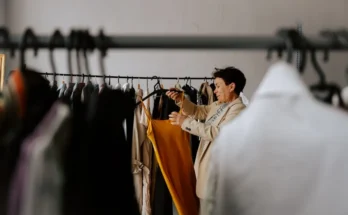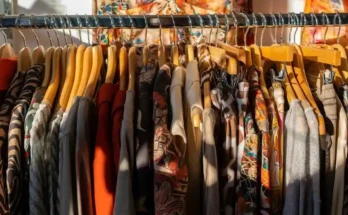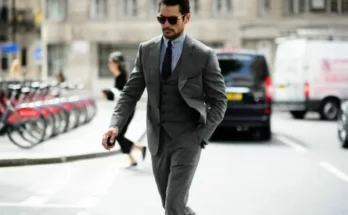The Fabric of Expression:
Fashion is far more than fabric stitched into garments. It is a living, breathing reflection of identity, society, and creativity. When someone steps out wearing a look they love, it’s not just about aesthetic appeal—it’s a declaration, a story worn on the skin. Whether bold or minimalist, vintage or futuristic, fashion is the language many of us speak before we utter a word.
The way we dress influences how we feel, how others perceive us, and even how we navigate the world. While often dismissed as superficial, fashion is deeply embedded in cultural history and personal storytelling. From the hem of a sari to the structure of a tailored suit, every thread has significance.
The Heartbeat of Personal Style:
-
Following Trends Versus Finding Yourself
Trends come and go like seasonal tides—one year it’s neon, the next it’s earthy neutrals. While it’s fun to play with trending colors, patterns, and silhouettes, real style lives in consistency and self-awareness. Fashion icons aren’t simply those who wear what’s popular—they’re the ones who wear what feels right.
Finding your personal style is a journey, not a checklist. It’s about understanding what makes you feel powerful, comfortable, and authentic. It could be as simple as loving high-waisted jeans or always reaching for oversized blazers. The trick is not just following fashion but letting it follow you.
-
The Closet as a Mirror
Our wardrobes often reflect our evolution. That band tee from your teenage years? It tells a story. The blazer you bought for your first job interview? A marker of growth. Clothing is one of the few possessions that touches us directly, physically and emotionally.
Style evolves with us, echoing our shifts in personality, career, and confidence. What once felt daring might one day become your norm. What you never thought you’d wear might end up being the very thing that defines your look.
The Psychology of Getting Dressed:
-
Wearing Confidence, Not Just Clothes
The right outfit can change your day. There’s a reason why people say “dress for success”—because what you wear influences your mindset. A crisp shirt can lend a sense of control. A flowing dress can make you feel free. A power suit? Instant authority.
Fashion acts as a kind of armor. It can protect, empower, or disarm. That’s the magic: the ability to choose how you want the world to see you—and, more importantly, how you see yourself.
-
Dressing for Your Mood vs. Dressing to Change It
Some days we dress to match our feelings—cozy sweats on a low day, bold colors when we’re upbeat. Other times, the outfit sets the tone. Feeling sluggish? That sharp outfit might lift your energy. Feeling invisible? Bright shoes could reclaim your space.
Fashion allows us to either reflect or reshape our emotional state. It’s a dynamic relationship, and the choice is always ours.
Culture, Identity, and the Politics of Fashion:
-
When Clothing Speaks Louder Than Words
Across centuries and continents, fashion has served as both celebration and resistance. Think of the miniskirt revolution of the 1960s, or how traditional garments like the kimono, dashiki, or hijab symbolize heritage and pride. Fashion can disrupt norms, demand attention, or quietly honor ancestry.
Even choices that seem personal—like wearing natural hair or embracing modest fashion—can become political statements in certain contexts. Clothing isn’t neutral. It’s loaded with meaning, especially when viewed through lenses of race, gender, class, or religion.
-
Global Influence and Cultural Appreciation
In a connected world, fashion knows no borders. We draw inspiration from Tokyo streetwear, Parisian elegance, African prints, and Indigenous beadwork. While this cultural cross-pollination can be beautiful, it must come with awareness. Appreciation is rooted in respect and understanding; appropriation arises when we borrow without credit or context.
Responsible fashion celebrates global beauty while honoring the roots it comes from. It asks: Am I amplifying or erasing? A thoughtful approach enriches both style and substance.
Sustainability and the Ethics of Style:
-
The Rise of Conscious Fashion
As the dark side of fast fashion becomes harder to ignore—sweatshops, textile waste, environmental degradation—more people are turning toward sustainability. This shift is reshaping the industry from the inside out. Consumers are demanding transparency, and brands are being held accountable for their sourcing, production, and labor practices.
Sustainable fashion doesn’t mean boring or bland. It means mindful: buying better, wearing longer, reusing more. Vintage pieces, capsule wardrobes, and thrift finds are all stylish, ethical choices that reduce harm while adding character to your closet.
-
Slow Fashion, Fast Impact
Slow fashion isn’t just a trend—it’s a mindset. It encourages us to pause before purchasing, to think about where our clothes come from and where they’ll end up. It’s about investing in quality over quantity, in timelessness over trendiness.
And it’s not just about the planet. It’s about people. Choosing ethical brands supports fair wages, safe working conditions, and dignity for garment workers around the world.
Technology Meets Fashion:
-
The Rise of Virtual Style and AI Influence
Fashion is going digital, and not just on runways. Augmented reality fitting rooms, AI-generated outfit ideas, and virtual fashion shows are redefining how we interact with clothing. Brands are embracing tech to personalize experiences and reduce waste, while consumers are finding new ways to explore style.
Digital fashion—where people buy clothes for their avatars or social media photos—is becoming its own niche. It sounds surreal, but in a world where identity is both physical and digital, dressing your online self is just another extension of personal style.
-
Influencers, Algorithms, and Aesthetic Culture
Social media has turned everyday people into style icons. From Instagram to TikTok, fashion inspiration is instant, visual, and often algorithm-driven. This democratization of fashion has both positives and pitfalls. It has allowed underrepresented voices to shine—but it’s also fueled pressure for perfection and fast consumption.
Curating a digital aesthetic can be creative and empowering—but it’s important not to lose sight of authenticity in the pursuit of likes. The best style isn’t algorithm-approved. It’s you-approved.
Conclusion:
Fashion is more than outfits—it’s an evolving form of self-expression, identity, and culture. It’s not just about what you wear, but why you wear it. Every choice—from a vintage jacket to an ethically made dress—tells a story.
Style is deeply personal yet universally understood. It changes with the times, yet remains rooted in who we are. Whether you see fashion as armor, art, or activism, one thing is certain: it’s always more than fabric. It’s feeling, voice, and vision woven together.
So wear what moves you. Dress like your thoughts are too loud to be hidden. And remember, the most iconic thing you can wear is you.




